Center for Native Peoples and the Environment
Who We Are
CNPE Advisory Board
The Center is guided by an advisory board consisting of Indigenous environmental leaders. Members include:
- Henry Lickers, Director, Environment Division, Mohawk Council of Akwesasne
- David Arquette, Director, Haudenosaunee Environmental Task Force
- Jeanne Shenandoah, environmental leader, Onondaga Nation
- Wendy Gonyea, environmental leader, Onondaga Nation
- Richard Hill, Indigenous Knowledge Center, Six Nations Polytechnic
- Barbara Walls, Professor of Indigenous Language and Culture, Chanie Wenjack School for Indigenous Studies
- Freida Jacques, environmental leader, Onondaga Nation
Staff
Neil Patterson Jr., Executive Director
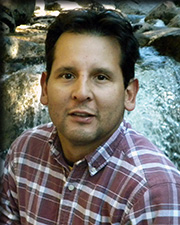 My work has been to celebrate, restore, and build relationships between indigenous
communities and their aboriginal territory. This space still creates language, tradition,
and story of human interaction for several thousand years. The pragmatic way in which
indigenous people have co-evolved within their landscapes provides the most sublime
template for re-imagining and creating sustainable food, material, and energy systems.
My work has been to celebrate, restore, and build relationships between indigenous
communities and their aboriginal territory. This space still creates language, tradition,
and story of human interaction for several thousand years. The pragmatic way in which
indigenous people have co-evolved within their landscapes provides the most sublime
template for re-imagining and creating sustainable food, material, and energy systems.
- Printup, Bryan and Patterson, Neil V. Jr. Tuscarora Nation. Mount Pleasant, South Carolina: Arcadia Publishing, 2007
- Ransom, James, et al. Words That Come Before All Else: Environmental Philosophies of the Haudenosaunee. Akwesasne Mohawk Territory: Native North American College, 2002
- Patterson, Neil V, Jr. "Native Water Enforcement From the Grassroots Up." Universities Council on Water Resources Spring 1997: 47+
- Annunziatta, Janice W, et al. Haudenosaunee Environmental Restoration: An Indigenous Strategy for Human Sustainability. Cambridge, England: Indigenous Development International, 1992.
Robin Kimmerer, Director Emeritus
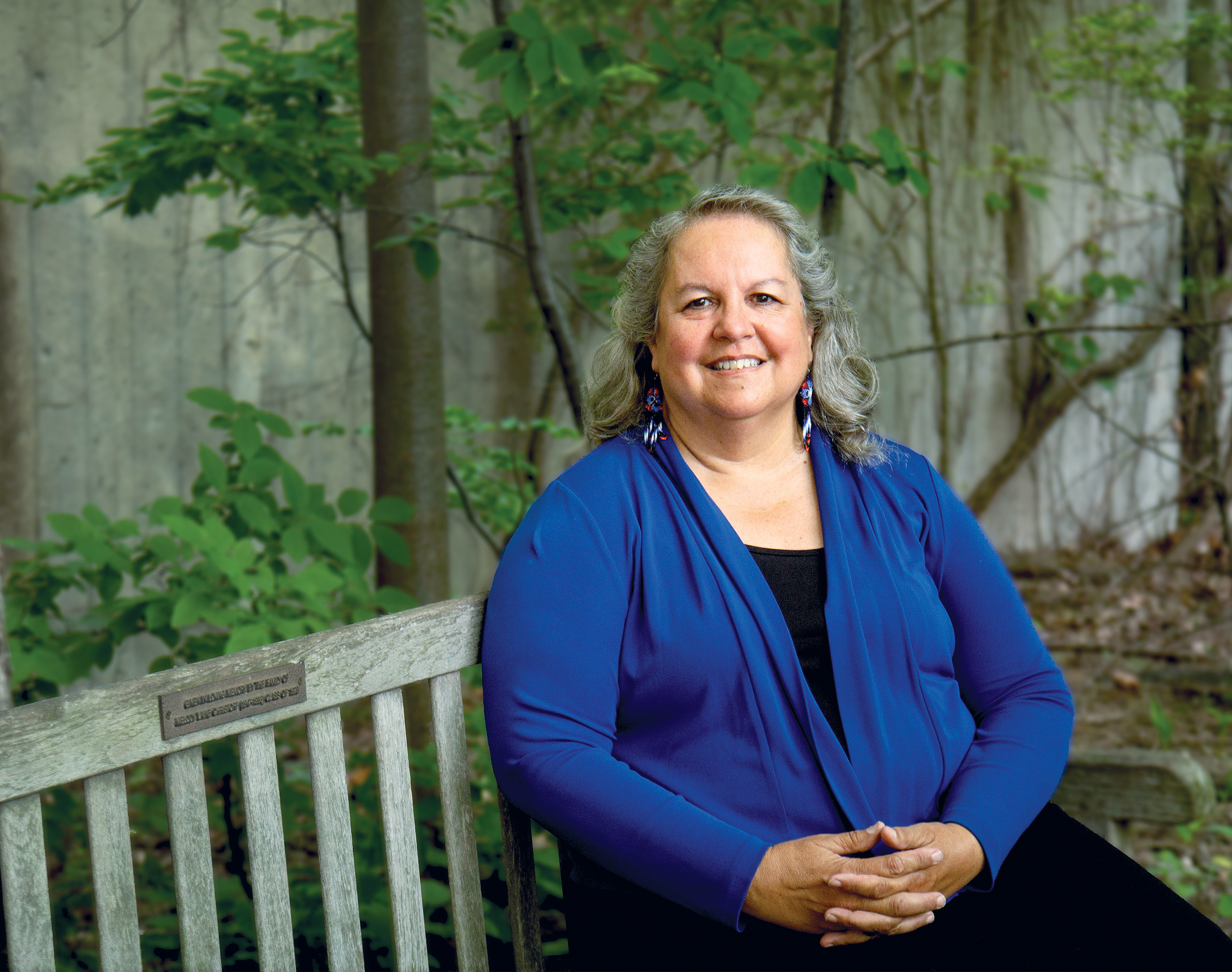 Dr. Kimmerer is a mother, plant ecologist, writer and SUNY Distinguished Teaching
Professor at the SUNY College of Environmental Science and Forestry in Syracuse, New
York. She serves as the founding Director of the Center for Native Peoples and the
Environment whose mission is to create programs which draw on the wisdom of both indigenous
and scientific knowledge for our shared goals of sustainability. Her research interests
include the role of traditional ecological knowledge in ecological restoration and
the ecology of mosses. In collaboration with tribal partners, she and her students
have an active research program in the ecology and restoration of plants of cultural
significance to Native people. She is active in efforts to broaden access to environmental
science education for Native students, and to create new models for integration of
indigenous philosophy and scientific tools on behalf of land and culture. She is engaged
in programs which introduce the benefits of traditional ecological knowledge to the
scientific community, in a way that respects and protects indigenous knowledge.
Dr. Kimmerer is a mother, plant ecologist, writer and SUNY Distinguished Teaching
Professor at the SUNY College of Environmental Science and Forestry in Syracuse, New
York. She serves as the founding Director of the Center for Native Peoples and the
Environment whose mission is to create programs which draw on the wisdom of both indigenous
and scientific knowledge for our shared goals of sustainability. Her research interests
include the role of traditional ecological knowledge in ecological restoration and
the ecology of mosses. In collaboration with tribal partners, she and her students
have an active research program in the ecology and restoration of plants of cultural
significance to Native people. She is active in efforts to broaden access to environmental
science education for Native students, and to create new models for integration of
indigenous philosophy and scientific tools on behalf of land and culture. She is engaged
in programs which introduce the benefits of traditional ecological knowledge to the
scientific community, in a way that respects and protects indigenous knowledge.
Dr. Kimmerer has taught courses in botany, ecology, ethnobotany, indigenous environmental issues as well as a seminar in application of traditional ecological knowledge to conservation. She is the co-founder and past president of the Traditional Ecological Knowledge section of the Ecological Society of America. Dr. Kimmerer serves as a Senior Fellow for the Center for Nature and Humans. Of European and Anishinaabe ancestry, Robin is an enrolled member of the Citizen Potawatomi Nation.
As a writer and a scientist, her interests in restoration include not only restoration of ecological communities, but restoration of our relationships to land. Dr. Kimmerer is the author of numerous scientific papers on the ecology of mosses and restoration ecology and on the contributions of traditional ecological knowledge to our understanding of the natural world. She is also active in literary biology. Her essays appear in Whole Terrain, Adirondack Life, Orion and several anthologies. She is the author of “Gathering Moss” which incorporates both traditional indigenous knowledge and scientific perspectives and was awarded the prestigious John Burroughs Medal for Nature Writing in 2005. She has served as writer in residence at the Andrews Experimental Forest, Blue Mountain Center, the Sitka Center and the Mesa Refuge. Her latest book “Braiding Sweetgrass: indigenous wisdom, scientific knowledge and the teachings of plants” was released in 2013.
- Kimmerer, R.W. 2013. Braiding Sweetgrass: Indigenous wisdom, scientific knowledge and the teachings of plants.” Milkweed Editions.
- Kimmerer, R.W. 2013. The Fortress, the River and the Garden: a new metaphor for cultivating mutualistic relationship between scientific and traditional ecological knowledge. in, “Contemporary Studies in Environmental and Indigenous Pedagogies” (Sense Publishers) edited by Kelley Young and Dan Longboat.
- Kimmerer, R.W. 2012 Searching for Synergy: integrating traditional and scientific ecological knowledge in environmental science education. Journal of Environmental Studies and Sciences 2(4):317-323
- Kimmerer, R. W. 2011 “Restoration and Reciprocity: The Contributions of Traditional Ecological Knowledge to the Philosophy and Practice of Ecological Restoration.” in “Human Dimensions of Ecological Restoration” edited by David Egan. Island Press.
- Kimmerer, RW. 2003 Gathering Moss: a natural and cultural history of mosses. Oregon State University Press.
- Kimmerer, R.W. 2002. Weaving traditional ecological knowledge into biological education: a call to action. BioScience 52:432-438.
- Kimmerer, R.W. and F.K. Lake 2001. Maintaining the Mosaic: The role of indigenous burning in land management. Journal of Forestry 99: 36-41.
- Kimmerer, R. W. 2000. Native Knowledge for Native Ecosystems. Journal of Forestry. 98(8):4-9
Tusha Yakovleva, Assistant Director
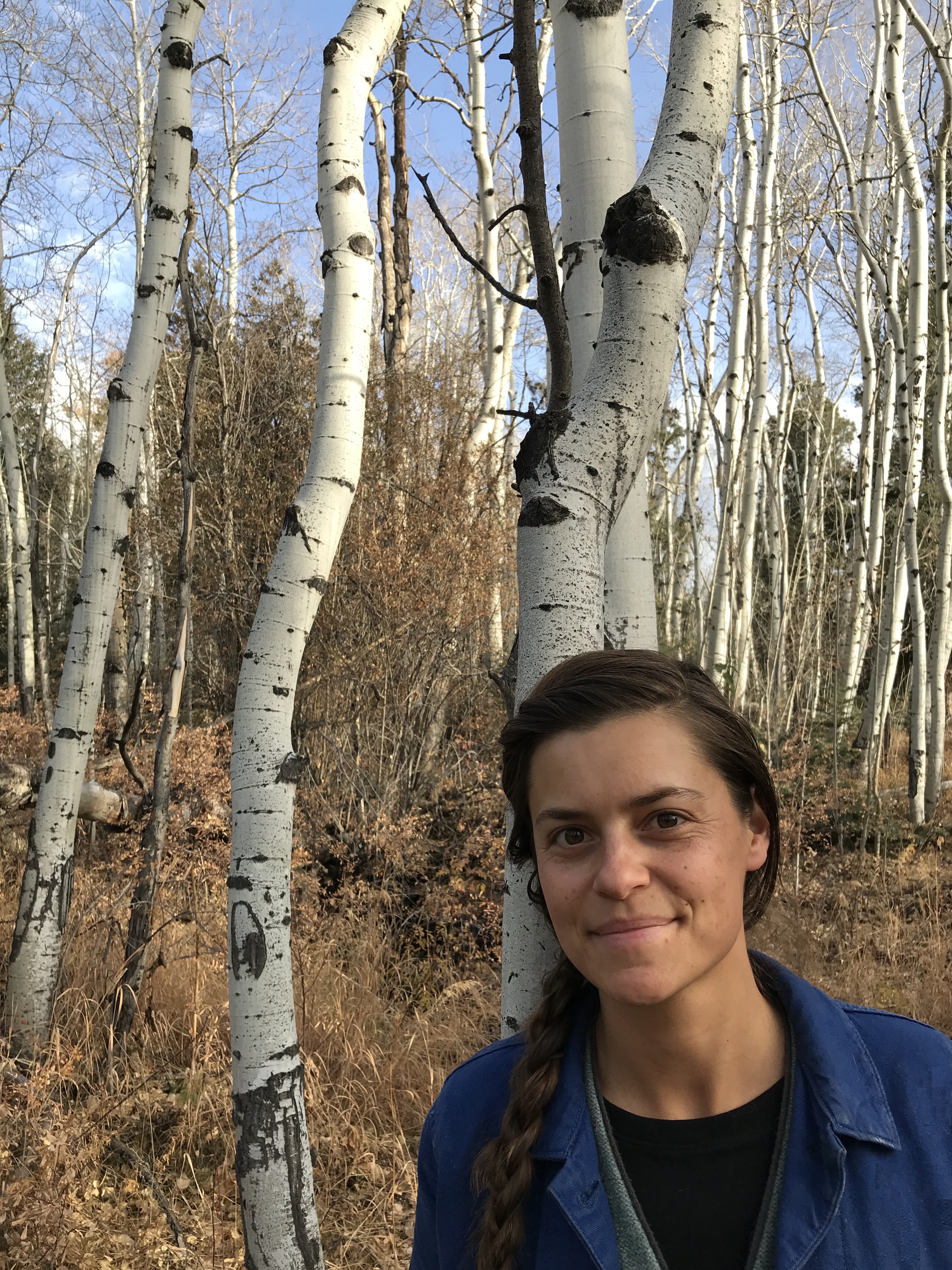
Kyle Artelle, Faculty Co-Director
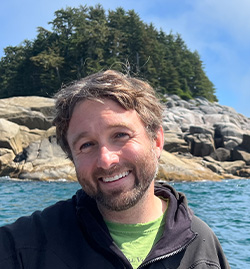 My group contributes to conservation, management, restoration, and stewardship approaches
that support people, other species, and places. Much of this is in collaboration with
First Nations communities and governments in an area now commonly referred to as the
Great Bear Rainforest of Coastal British Columbia, Canada.
My group contributes to conservation, management, restoration, and stewardship approaches
that support people, other species, and places. Much of this is in collaboration with
First Nations communities and governments in an area now commonly referred to as the
Great Bear Rainforest of Coastal British Columbia, Canada.
Research areas include:
- Ecology and stewardship of culturally important species, including wolves, black bears, and grizzly (brown) bears
- Place-based stewardship in support of people and biodiversity including the Haíɫzaqv (Heiltsuk) First Nation-led Xvíɫm̓ístaƛ h̓ákq̓áṃ qṇtxv bákvḷásu (“Our food will return”) program restoring multiple linked marine and intertidal species and ecosystems throughout their territory
- Inquiry into conservation and management approaches at scales from regional to continental
Current or upcoming opportunities include:
- Coastal wolf and biodiversity monitoring project that combines camera trapping, autonomous recording units (audio recordings), and non-invasive genetic materials (hairs and scats)
- Stellar sea lion integrated management, involving both sea lion demographics and population monitoring as well as potential human health dimensions of restoring sea lion food harvest
-
Herring transplant restoration project
- Restoration clam beds of economic, ecological, and cultural importance impacted by a recent oil spill and an invasive European Green Crab invasion
- Broader-scale wildlife ‘management’ and conservation-focused questions
Maddy Nyblade, Faculty Co-Director
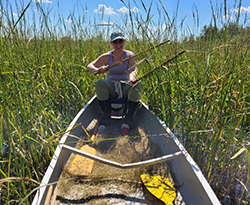 Maddy is an Environmental Studies professor in the Center for Native Peoples and
the Environment at SUNY ESF. She is a settler originally from central Pennsylvania,
but has since lived in Minneapolis, MN and now Syracuse, NY. In 2023, she completed
her PhD in Earth and Environmental Sciences, with a graduate minor in American Indian
and Indigenous Studies, at the University of Minnesota-Twin Cities. She is passionate
about studying the hydrologic impacts of climate and land cover change on culturally
important plants, especially Manoomin/Psiη (wild rice), in partnership with Indigenous
Nations.
Maddy is an Environmental Studies professor in the Center for Native Peoples and
the Environment at SUNY ESF. She is a settler originally from central Pennsylvania,
but has since lived in Minneapolis, MN and now Syracuse, NY. In 2023, she completed
her PhD in Earth and Environmental Sciences, with a graduate minor in American Indian
and Indigenous Studies, at the University of Minnesota-Twin Cities. She is passionate
about studying the hydrologic impacts of climate and land cover change on culturally
important plants, especially Manoomin/Psiη (wild rice), in partnership with Indigenous
Nations.
Catherine Landis, Science Advisor
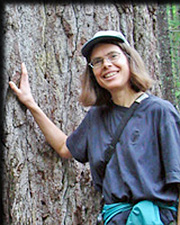 Catherine recently finished her doctorate at SUNY ESF. Her dissertation focused on
the historical ecology of the Onondaga Lake watershed, including a broad look at Indigenous
subsistence patterns. A major Superfund site, Onondaga Lake is also sacred to the
Haudenosaunee as the place where the Peacemaker came to unite the warring nations
and facilitate enduring peace through the Great Law. Dr. Landis earned a Master's
Degree also at ESF, where she studied riparian plant establishment along an urban
stream. She currently assists with the Center's efforts to enhance NYS DEC's capacity
to engage Indigenous communities and incorporate biocultural resources and restoration
into land planning.
Catherine recently finished her doctorate at SUNY ESF. Her dissertation focused on
the historical ecology of the Onondaga Lake watershed, including a broad look at Indigenous
subsistence patterns. A major Superfund site, Onondaga Lake is also sacred to the
Haudenosaunee as the place where the Peacemaker came to unite the warring nations
and facilitate enduring peace through the Great Law. Dr. Landis earned a Master's
Degree also at ESF, where she studied riparian plant establishment along an urban
stream. She currently assists with the Center's efforts to enhance NYS DEC's capacity
to engage Indigenous communities and incorporate biocultural resources and restoration
into land planning.
Erica Wood, Plant Program Manager
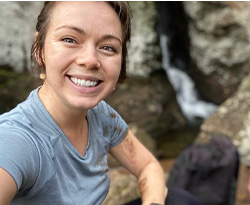
Sophie Brown, Postdoctoral Researcher
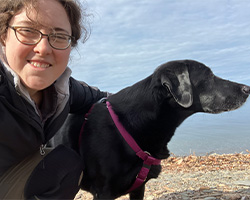 Sophie Brown is a Postdoctoral researcher at the Center for Native Peoples and the
Environment at SUNY Environmental Science and Forestry. Her work as a researcher centers
on Indigenous language restoration, decolonial studies of place, and frameworks for
allyship, with recent focus on the directionality of knowledge extraction and return,
as well as on the critical re-framing and disassembling of settler narrative within
landscape. She holds a doctoral degree in Environmental Science from SUNY ESF, a master’s
degree from SUNY ESF, and a certificate in Iroquois linguistics from Syracuse University.
Sophie also teaches at SUNY ESF as a visiting instructor in fields of environmental
and sustainability studies, environmental justice, and the environmental humanities.
She grew up in and resides on unceded land in Hodino̱hsho:nih territory, near what
is called Ithaca, NY, where she grows plants, takes care of pets, and writes and illustrates,
and near what is called Syracuse, NY, where she studies and works.
Sophie Brown is a Postdoctoral researcher at the Center for Native Peoples and the
Environment at SUNY Environmental Science and Forestry. Her work as a researcher centers
on Indigenous language restoration, decolonial studies of place, and frameworks for
allyship, with recent focus on the directionality of knowledge extraction and return,
as well as on the critical re-framing and disassembling of settler narrative within
landscape. She holds a doctoral degree in Environmental Science from SUNY ESF, a master’s
degree from SUNY ESF, and a certificate in Iroquois linguistics from Syracuse University.
Sophie also teaches at SUNY ESF as a visiting instructor in fields of environmental
and sustainability studies, environmental justice, and the environmental humanities.
She grew up in and resides on unceded land in Hodino̱hsho:nih territory, near what
is called Ithaca, NY, where she grows plants, takes care of pets, and writes and illustrates,
and near what is called Syracuse, NY, where she studies and works.
Beyond our staff and advisory board, our community at CNPE includes faculty, staff, and current and past students across the SUNY ESF campus.
